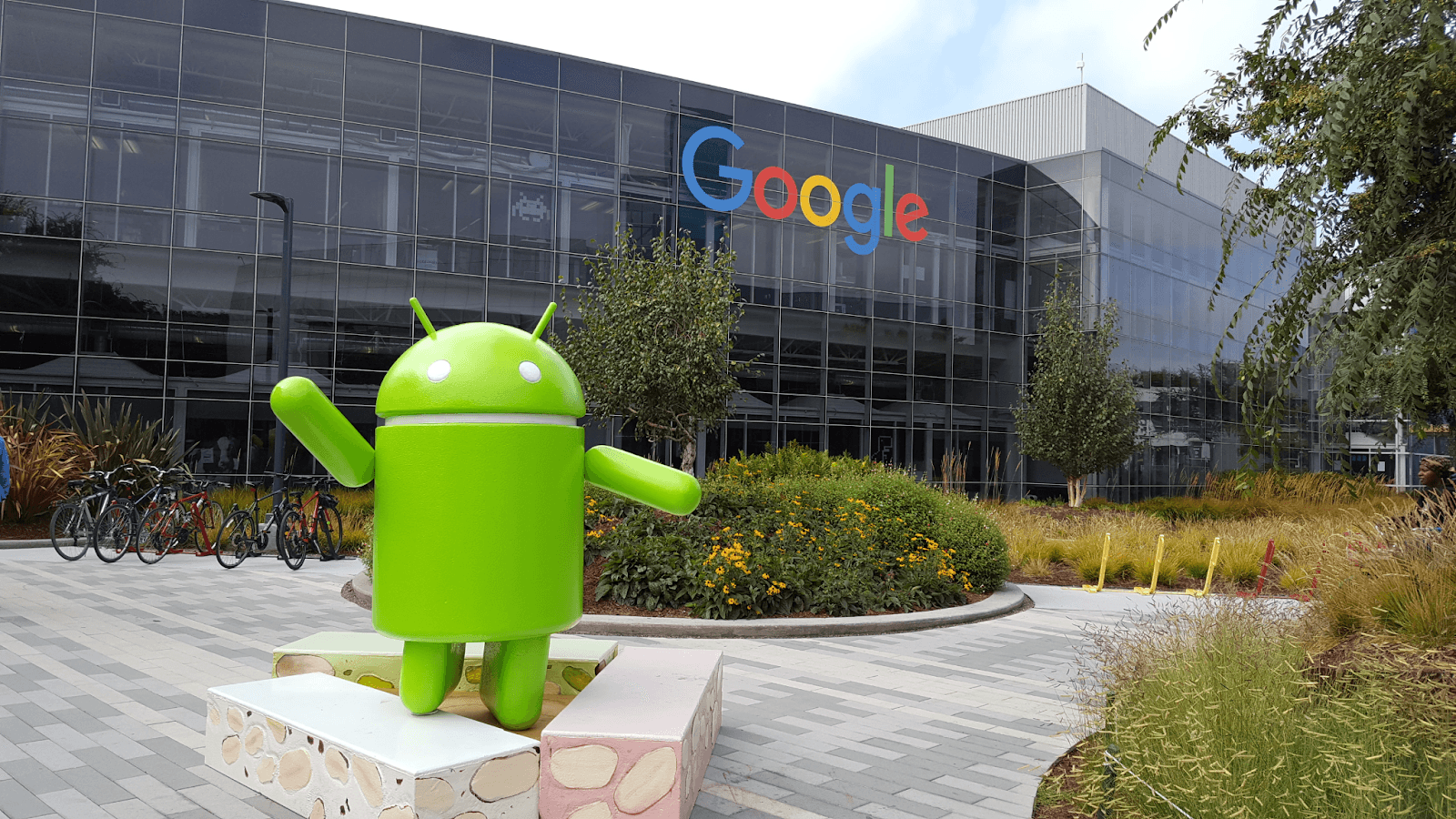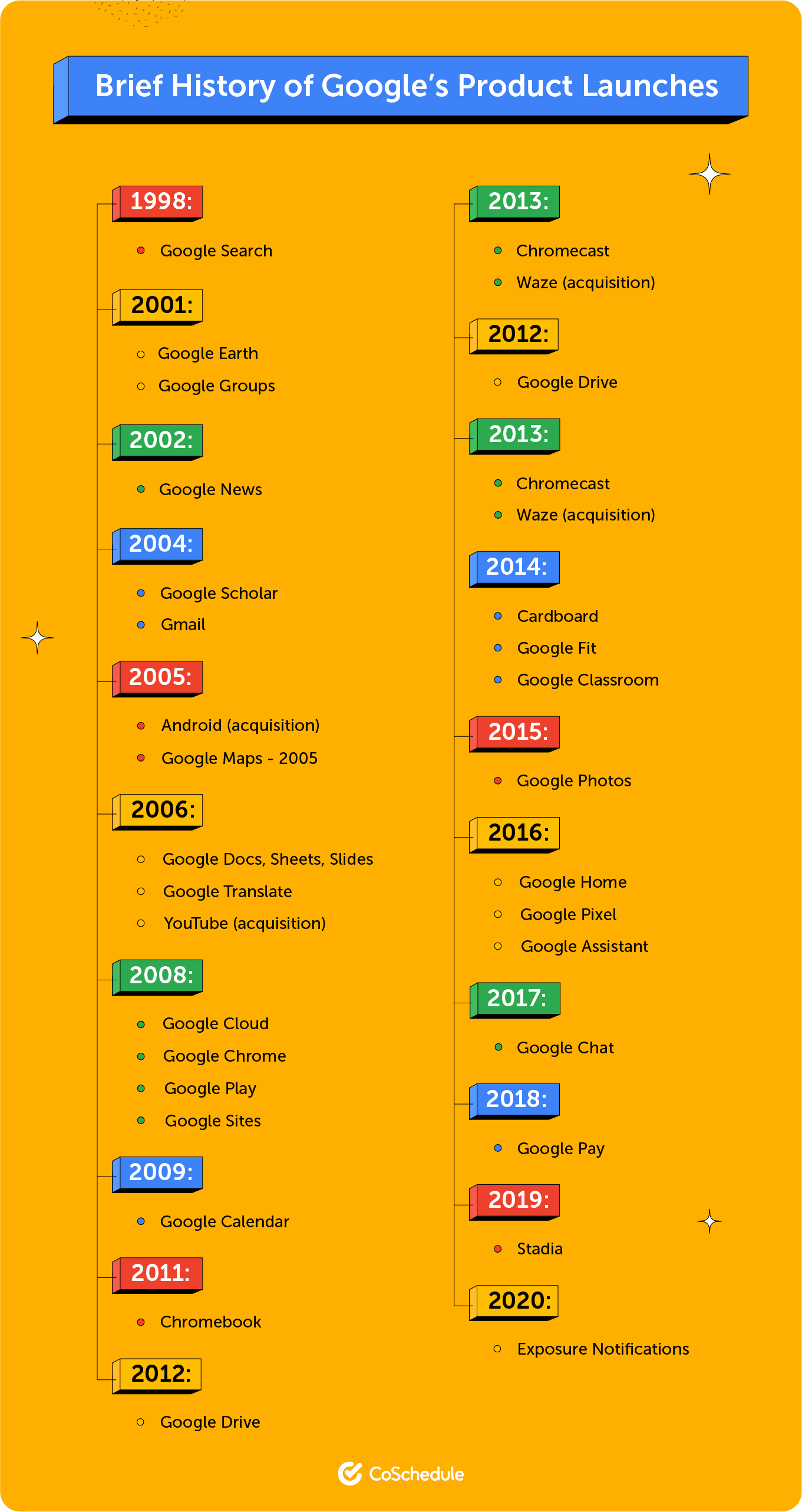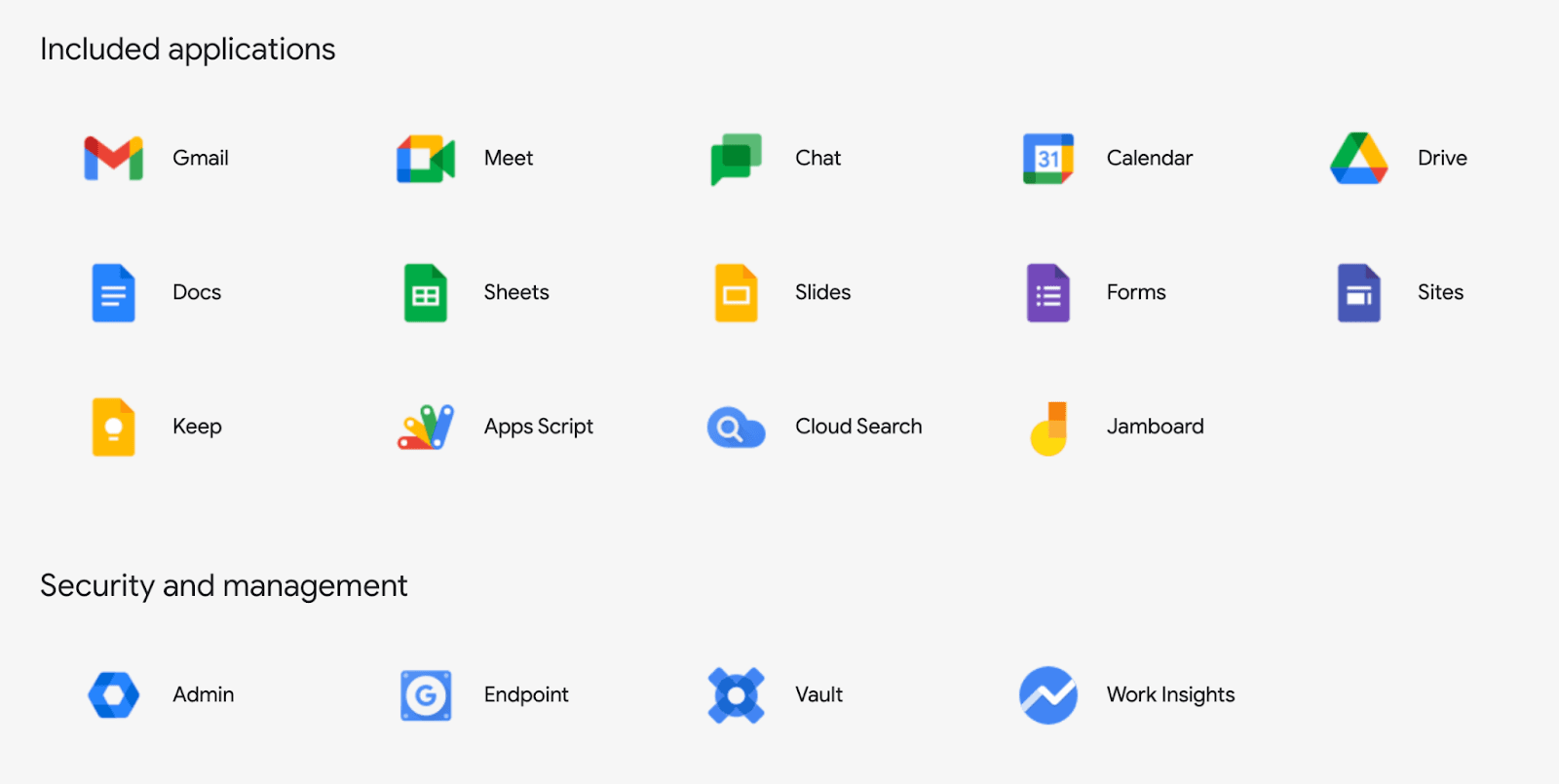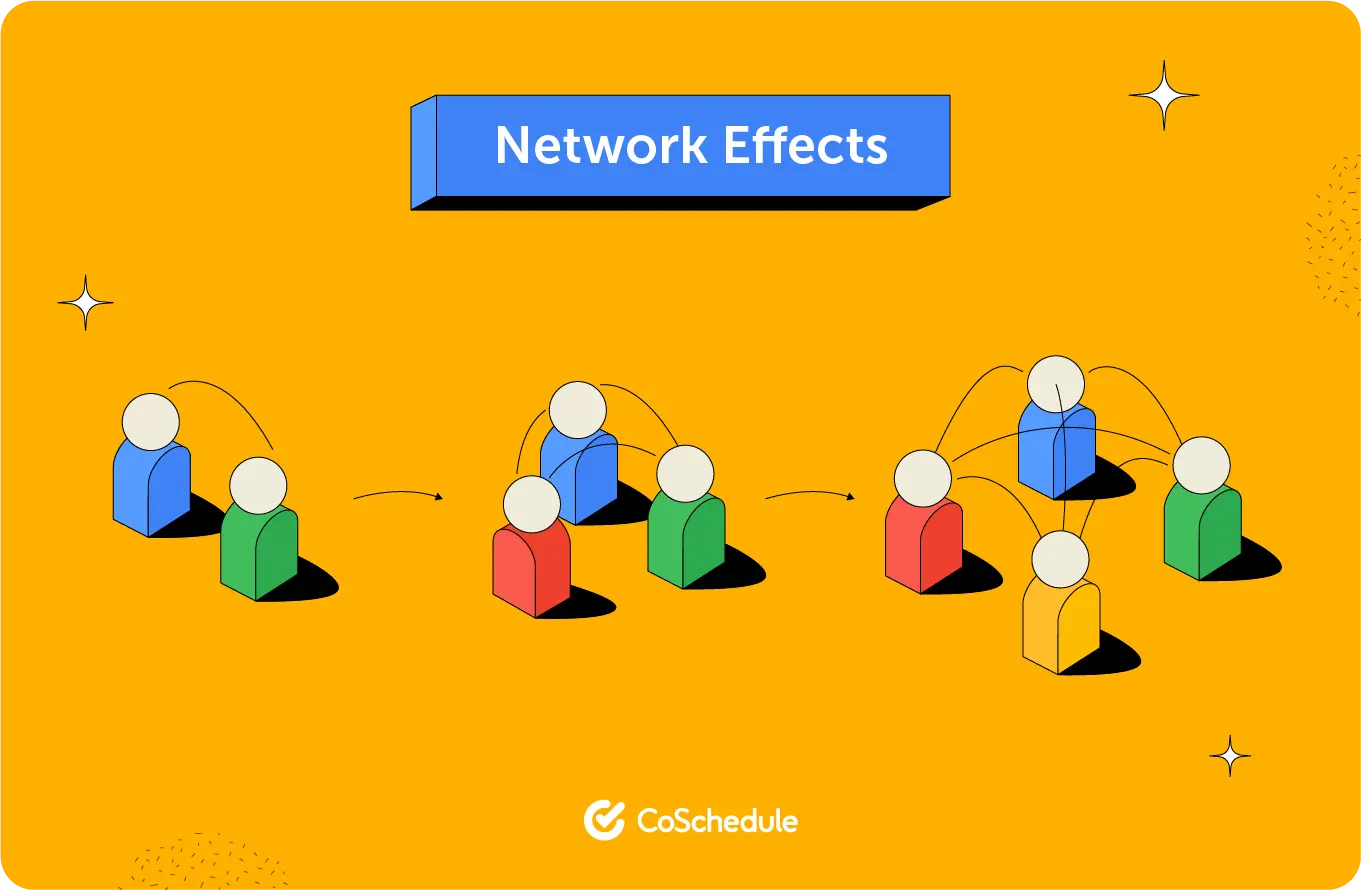
Google has long served marketers as a primary channel to distribute advertisements, and
optimizing your site for the platform is one of the only ways to ensure organic growth in the internet era. The company also owns a range of products for everything from entertainment to creative collaboration, and its search engine currently averages
5.4 billion searches per day.
This impressive size and success didn’t come about by accident.
Since its founding, Google has undertaken marketing strategies which lift up their products and utilize their immense collection of data to create powerful experiences for their customers.
How did Google reach this point through their product and marketing strategies? In this post we will explore what marketers can learn from the marketing strategies of this all-encompassing brand.
Google’s History by Product Launches
Google’s founding is a relatively well known story. Cofounders Larry Page and Sergey Brin founded the company in 1998 with a $100,000 investment from Sun Microsystems’ Andy Bechtolsheim, which they used to rent a garage space and begin development on the Google search engine, named after the unimaginably large number 10^100 to represent the massive amount of information they wanted to share.

Sergey Brin and Larry Page pose in the garage that started it all.
Source
Google set itself apart from other search engines in these early days by the way they formulated rankings and search results. While most search engines at the time based results on how often the designated keyword was shown, Google formulated results based on backlinks and relationships between websites, a strategy thought to result in better, more user-friendly results.
The company
quickly grew, expanding from a garage to a sprawling campus in Mountainview, California (the Googleplex). Still, the company continued to capitalize on its understanding of its users and the new way to find information on the internet which they pioneered.

The Googleplex (with accompanying Android mascot)
Source
While Google originated as a search engine, the company has since launched a wide array of products.
Here’s a look at many of the key products Google has launched or acquired over the years:

One thing that hasn’t changed across all of these product launches is the fact that Google continues to build their products with a specific formula in mind.
How Does Google Decide to Build Products?
As a worldwide brand, Google’s product launches never fail to create waves and make people pay attention. But how do they decide which new products they should create?
Insights from User Data
With its wide array of products and massive user base, Google has a collection of user data unmatched by nearly any other company in the world. With this data they are able to gain valuable insights into what their users want and the best ways to create products that solve their problems.
When they see trends in their data, Google is able to capitalize by creating product lines that solve problems their customers are actually having.
Product-Led Growth Strategies
When a new Google product launches, the company prioritizes usage before they even consider monetization. This way they can work out how to create the best possible customer experience and grow a dedicated user base, ensuring the product’s success from the start.
Essentially, they optimize for growth rather than revenue, and find immense success doing so.
Product Ecosystems
One recurring theme when looking at Google’s product offerings is their consistent use of dedicated ecosystems for collections of their products with similar use cases. A great example of this is
Google Workspace:
 Source
Source
This collection of apps integrates together, making it easy for users to create and manage their work across each individual app. We’ll dive into this concept in more detail later, but this makes it easy for word of mouth to spread as more people rely on Google products to manage their entire creative process.
How Does Google Market So Many Products So Effectively?
With all of these product lines in so many different niches, how does Google
continue to successfully grow their user base?
Network Effects
One common feature among Google’s product lines, specifically those within
Google Workspace, is that when one user starts using the product it increases the value for other users. This is because when people use the platforms to collaborate it necessitates those they work with use the same platforms, whose collaborators must also use the platforms, and so on.

If someone is using
Google Docs it makes other people want to use Google Docs in order to be able to effectively collaborate on projects. Over time it becomes the primary collaboration app, as people want to work together on an app which everyone knows.
Brand Awareness
Google is one of the largest and most recognizable brands worldwide, and certainly in the U.S. This means that when they release a new product it gains great amounts of publicity and users immediately clamor to use it, a huge advantage for any product launch campaign.
 Source
Source
Add this excitement over new products to the authority and confidence which is given to a product when the Google name is attached to it, and you have a recipe for successful product launches time and time again.
A/B Testing
Finally, a reason Google can successfully launch so many products is that they are in a constant state of A/B testing their products. This is how they can have so many similar product lines at the same time, like how at one point in time there were
four separate instant messaging platforms on the Google network.
By constantly testing and optimizing their product lines without too much reliance on one product at a time, Google is able to build its portfolio while simultaneously paring back its offerings to the most successful product lines.
Google's Marketing Mix (The Four Ps)
To summarize, here's a breakdown of google's primary
marketing mix.
Product
Google, as you’ve seen, offers a diverse array of products. These include:
- Web-based products
- Operating systems
- Desktop apps
- Mobile apps
- Hardware products
- Services
This diversity of product lines enables Google to continue expanding behind its product-led growth strategies.
Price
Google uses a variety of pricing strategies for its many products, including:
Freemium pricing is essentially offering free services with purchasable add-ons, like those within Google Workspace.
Market-oriented pricing is a strategy in which companies determine pricing based on the competitive landscape of the market they are looking to appeal to. This can be seen most clearly in Google’s pricing for their physical products like Pixel and Chromecast, which have to compete with a whole landscape of other options.
Value-based pricing takes into account consumers’ perception of the product’s value when setting price points. This is most apparent in Google ads, whee companies can bid on ad space within searches based on the perceived value of that search traffic.
Place
Like most primarily-online businesses, Google’s business takes place on the internet.
The company uses its websites, apps, and platforms to promote its software.
For physical products like the Google Pixel, the company primarily uses well-established retail outlets.
Promotion
Google uses a few different primary promotional strategies, including:
- Sales promotion
- Public relations
- Sponsorship
- Advertising
Google offers discounts and free product usage to entice customers to enter their product ecosystem, like the ability to create and use a Gmail account for free.
Google’s public relations strategies include sponsoring a variety of events centered around social outreach and providing technical and financial support for communities.
Google uses ads sparingly, but uses some forms of traditional media to share their physical products. They also make use of digital advertisements to promote services like Google Workspace.
What Can Software Marketers Learn From These Strategies?
So, what you’ve surely been thinking this whole time: what can I learn from Google’s marketing strategies that will make me a better marketer? Most people can’t claim they have the brand recognition which Google enjoys, but there are a few key takeaways from the strategies that have made Google such a success you can apply to any level of business.
Use Data to Determine Customers’ Problems, Then Solve Them
Even if you don’t have the massive databases Google employs to find insights, your marketing strategies should always be built around the newest, best
data you can gather on your target audience.
This advice is twofold for your new product lines as well. A main factor contributing to Google’s sustained
success employing new product lines is that they are all built around solving specific problems they have identified by carefully analyzing consumer data.
What does that mean for you?
Go talk to your customers. Determine what problems they may still be having despite your service, and find new ways to solve them.
If you follow the data, the results will come.
Product-Led Growth (PLG) Strategies
Another lesson to draw from Google’s marketing strategy is that businesses can benefit from a
focus on growth over revenue. This means you should create your product, share it, grow your audience — then consider how to make a profit.
This may seem counterintuitive — businesses are supposed to make money — but the main idea here is that your customer base can grow far more from a free product at the start of its life cycle than it ever will from a paid product. The main idea is that you should focus on getting a lot of users, and then learn how to monetize your user base.
Consider offering a ‘freemium’ version of your product. This version would offer some of the features customers love, but withhold just enough to incentivise upgrading for satisfied customers, many of whom may not have even tried your product were it not free.
This is the best way to make your product market itself — and it can bring you major success.
Build Products That Work Together
Finally, Google has found massive success with a variety of product lines because it builds products that work seamlessly together, allowing ease of collaboration and incentivising people to use their entire product line once they use one app.
CoSchedule does this with our
Marketing Suite and
Headline Studio integration. By making it easy for users of one product to integrate their work with our other products, users of one product are more likely to use the other.
Look at ways you can make your different product lines work more seamlessly with one another — your loyal customers will be thankful.
Google’s Continued Success
The future of Google seems to be in good hands. The brand is bigger than ever, and is making leaps in computer software and hardware at the same time that their physical devices — like the Chromebook — are taking off in the education and work-dedicated devices space. Not to mention the
massive collection of product lines the brand boasts.
By
continuing to invest in the future of technology, Google is set up for success in the future. Their wide variety of product lines, many of which people rely on on a day-to-day basis, ensures that they will continue to grow going forward.
All the while, Google Search is still the
biggest search engine in the world.
Talk about not putting all your eggs into one basket.
 Google has long served marketers as a primary channel to distribute advertisements, and optimizing your site for the platform is one of the only ways to ensure organic growth in the internet era. The company also owns a range of products for everything from entertainment to creative collaboration, and its search engine currently averages 5.4 billion searches per day.
This impressive size and success didn’t come about by accident. Since its founding, Google has undertaken marketing strategies which lift up their products and utilize their immense collection of data to create powerful experiences for their customers.
How did Google reach this point through their product and marketing strategies? In this post we will explore what marketers can learn from the marketing strategies of this all-encompassing brand.
Google has long served marketers as a primary channel to distribute advertisements, and optimizing your site for the platform is one of the only ways to ensure organic growth in the internet era. The company also owns a range of products for everything from entertainment to creative collaboration, and its search engine currently averages 5.4 billion searches per day.
This impressive size and success didn’t come about by accident. Since its founding, Google has undertaken marketing strategies which lift up their products and utilize their immense collection of data to create powerful experiences for their customers.
How did Google reach this point through their product and marketing strategies? In this post we will explore what marketers can learn from the marketing strategies of this all-encompassing brand.
 Sergey Brin and Larry Page pose in the garage that started it all. Source
Google set itself apart from other search engines in these early days by the way they formulated rankings and search results. While most search engines at the time based results on how often the designated keyword was shown, Google formulated results based on backlinks and relationships between websites, a strategy thought to result in better, more user-friendly results.
The company quickly grew, expanding from a garage to a sprawling campus in Mountainview, California (the Googleplex). Still, the company continued to capitalize on its understanding of its users and the new way to find information on the internet which they pioneered.
Sergey Brin and Larry Page pose in the garage that started it all. Source
Google set itself apart from other search engines in these early days by the way they formulated rankings and search results. While most search engines at the time based results on how often the designated keyword was shown, Google formulated results based on backlinks and relationships between websites, a strategy thought to result in better, more user-friendly results.
The company quickly grew, expanding from a garage to a sprawling campus in Mountainview, California (the Googleplex). Still, the company continued to capitalize on its understanding of its users and the new way to find information on the internet which they pioneered.
 The Googleplex (with accompanying Android mascot) Source
While Google originated as a search engine, the company has since launched a wide array of products.
Here’s a look at many of the key products Google has launched or acquired over the years:
The Googleplex (with accompanying Android mascot) Source
While Google originated as a search engine, the company has since launched a wide array of products.
Here’s a look at many of the key products Google has launched or acquired over the years:
 One thing that hasn’t changed across all of these product launches is the fact that Google continues to build their products with a specific formula in mind.
One thing that hasn’t changed across all of these product launches is the fact that Google continues to build their products with a specific formula in mind.
 Source
This collection of apps integrates together, making it easy for users to create and manage their work across each individual app. We’ll dive into this concept in more detail later, but this makes it easy for word of mouth to spread as more people rely on Google products to manage their entire creative process.
Source
This collection of apps integrates together, making it easy for users to create and manage their work across each individual app. We’ll dive into this concept in more detail later, but this makes it easy for word of mouth to spread as more people rely on Google products to manage their entire creative process.
 If someone is using Google Docs it makes other people want to use Google Docs in order to be able to effectively collaborate on projects. Over time it becomes the primary collaboration app, as people want to work together on an app which everyone knows.
If someone is using Google Docs it makes other people want to use Google Docs in order to be able to effectively collaborate on projects. Over time it becomes the primary collaboration app, as people want to work together on an app which everyone knows.
 Source
Add this excitement over new products to the authority and confidence which is given to a product when the Google name is attached to it, and you have a recipe for successful product launches time and time again.
Source
Add this excitement over new products to the authority and confidence which is given to a product when the Google name is attached to it, and you have a recipe for successful product launches time and time again.


